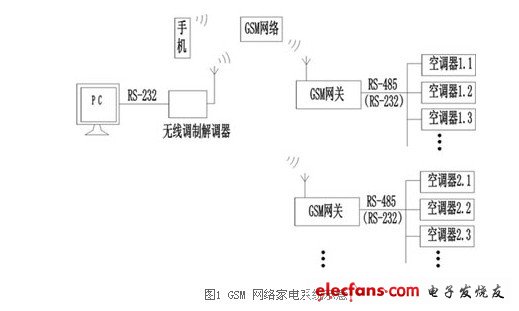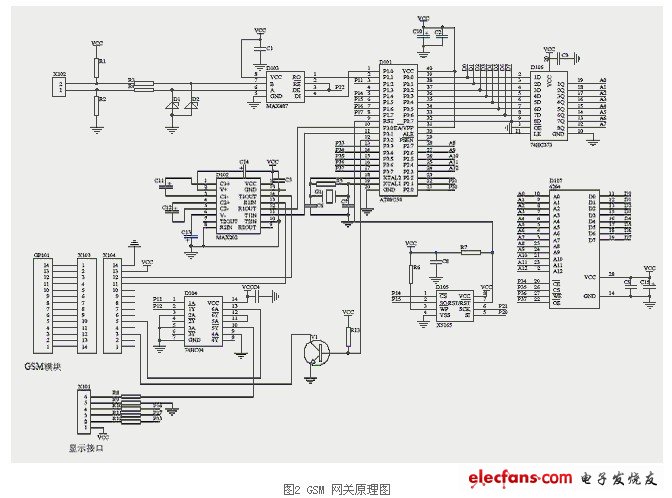Application of GSM network technology in network home appliances
1 Introduction
With the rapid development of the economy and the continuous improvement of the quality of life, people have increasingly higher requirements for the comfort, safety and convenience of the living environment. For example, in the hot and scorching heat, I hope that I can enjoy the coolness brought by the air conditioner when I go to work; when people travel outside, they hope to turn on the lights and TV sets at home for a period of time and then turn off to create the illusion of someone at home and improve the safety of the home. When the thief destroys the car's anti-theft alarm system, it can trigger another system to automatically call the mobile phone of the car owner or the local police who is working in the field; it will be off work in half an hour, and now turn on the electric heater in the home to boil water, etc. As another example, many commercial air conditioners (such as those used in telecom base stations) are now installed in remote, remote and barren areas. The climate conditions in these places are very harsh, and they are unattended all year round. To ensure that the equipment inside can operate normally and stably, It is necessary to monitor the ambient temperature, humidity, and air conditioner operating conditions in the computer room at all times. When the air conditioner fails, it should be able to promptly and automatically alert the control center or the mobile phone of the staff on duty.
In these applications, a dedicated network cable is required through a wired network (such as a wired Internet network and a PSTN network), which is uneconomical and inconvenient to implement. Due to the wide coverage of GSM network, users do not need to set up another network, and the number of users is unlimited. Therefore, it has unparalleled advantages over traditional wired trunking systems. In addition, the SMS function of GSM is not limited by time and location, making the use of GSM The application prospects of network appliances constructed by the network are getting wider and wider. To this end, the company set up a project in 2004 and successfully developed a GSM network air-conditioning system based on GSM network home appliances.
2 System Introduction
The system is shown in Figure 1.

The system in the picture can be divided into 4 parts; (1) PC (including a wireless modem connected through serial port) or mobile phone, send or receive data through GSM network; (2) GSM network; (3) GSM gateway, which is PC A bridge to communicate with home appliances; (4) Network home appliances, which can be network air conditioners, refrigerators, electric appliances, electric curtains, etc. (the air conditioner is taken as an example).
In this system, a PC can take any number of gateways, and it can be identified according to the telephone number (SIM card number) of the gateway during communication; a gateway can take 128 network appliances (limited by the 485 bus), according to the address of the network appliances To identify. The high-order address of network home appliances indicates the type of home appliances, such as air conditioner 1, water heater 2, etc., while the low-order address is automatically assigned by the gateway according to the number of registered appliances of various types of appliances.
The gateway is the technical key of the entire system, so the design of the GSM gateway is introduced below.
3 GSM gateway hardware design
Figure 2 is a schematic diagram of the GSM gateway. Among them D101 is 89C58 one-chip computer; D106, D107 make up the expanded RAM together, mainly used for storing the instant status information of all air conditioners under the gateway; The model of GP101 is TC35 module, connected with the one-chip computer through RS232 (D102). This module is the core module of GSM dual-band communication designed by Siemens for embedded devices. It supports voice communication, data communication and short message functions. It has the standard AT command interface defined by GSM07.05. D105 is EEPROM, which is used to store communication passwords and phone numbers. , Air conditioning information code, etc., also play the role of external Watchdog; X102 connects to the network air conditioning through the 485 bus (D101).

Because the GSM module has strong radio frequency interference when dialing and sending and receiving short messages, attention should be paid to anti-interference when designing the PCB.
Tubular Motors with AC power supply
Ac Tubular Motor,Radio Receiver In Tubular Motor,45Mm Receiver In Tubular Motor,Am45 Built-In Receiver Tubular Motor
GUANGDONG A-OK TECHNOLOGY GRAND DEVELOPMENT CO.,LTD. , https://www.a-okmotor.com